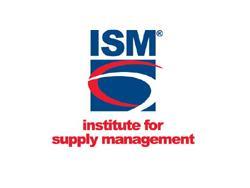Purchasing Managers' Index Inched Downward to 59.1% in Dec.
Tempe, AZ, February 5, 2018-The January Purchasing Managers Index registered 59.1%, a decrease of 0.2 percentage point from the seasonally adjusted December reading of 59.3%, according to the latest Manufacturing ISM Report On Business.
The New Orders Index registered 65.4%, a decrease of two percentage points from the seasonally adjusted December reading of 67.4%.
The Production Index registered 64.5%, a 0.7 percentage point decrease compared to the seasonally adjusted December reading of 65.2%.
The Employment Index registered 54.2%, a decrease of 3.9 percentage points from the seasonally adjusted December reading of 58.1%.
The Supplier Deliveries Index registered 59.1%, a 1.9 percentage point increase from the seasonally adjusted December reading of 57.2%.
The Inventories Index registered 52.3%, an increase of 3.8 percentage points from the December reading of 48.5%.
The Prices Index registered 72.7% in January, a 4.4 percentage point increase from the December reading of 68.3%, indicating higher raw materials prices for the 23rd consecutive month.
Comments from the panel reflect expanding business conditions, with new orders and production maintaining high levels of expansion; employment expanding at a slower rate; order backlogs expanding at a faster rate; and export orders and imports continuing to grow faster in January. Supplier deliveries continued to slow (improving) at a faster rate. Price increases occurred across all industry sectors. The Customers’ Inventories Index indicates levels are still too low. Capital expenditure lead times increased 8 percent during the month of January.
Of the 18 manufacturing industries, 14 reported growth in January in the following order: textile mills; fabricated metal products; plastics & rubber products; primary metals; machinery; transportation equipment; apparel, leather & allied products; chemical products; computer & electronic products; paper products; petroleum & coal products; electrical equipment, appliances & components; miscellaneous manufacturing; and food, beverage & tobacco products.
Four industries reported contraction during the period: printing & related support activities; wood products; furniture & related products; and nonmetallic mineral products.
